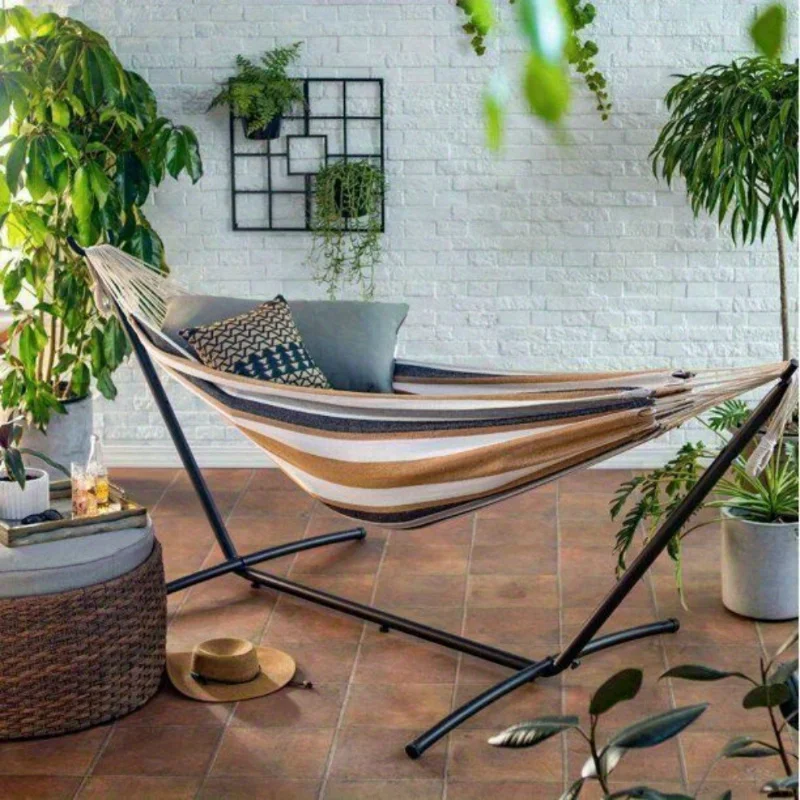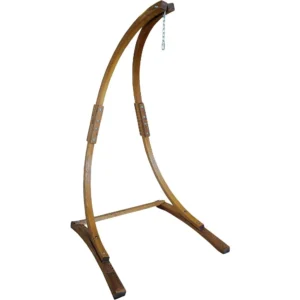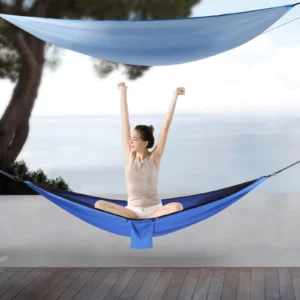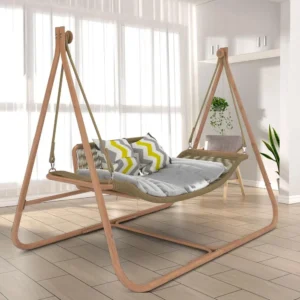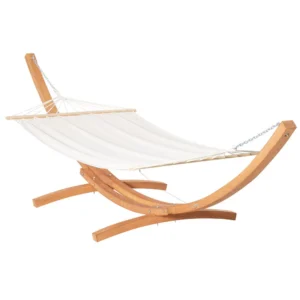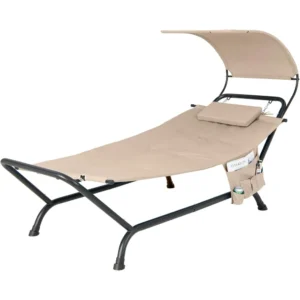Introduction: Understanding the Importance of Hammock Safety
Hammock safety isn’t just about preventing falls—it encompasses proper installation, material durability, weight capacity understanding, and environment-specific considerations that ensure your relaxation doesn’t end in injury. With hammocks becoming increasingly popular both as indoor relaxation nooks and outdoor retreat spaces, understanding the distinct safety needs of each setting is crucial.
The difference between indoor and outdoor hammock safety extends far beyond just location. Indoor setups must contend with structural integrity of walls and ceilings, while outdoor hammocks face nature’s unpredictable elements. Recent studies suggest that improper hammock installation accounts for over 75% of hammock-related injuries, highlighting the importance of environment-specific safety knowledge.
At Outside Luxe, we thoroughly test all our hammock systems for safety factors including:
– Weight capacity verification
– Structural integrity under various conditions
– Anchor point security and durability
– Material resilience and long-term performance
Whether you’re planning to create a cozy indoor reading nook or an outdoor retreat, understanding the indoor versus outdoor hammock placement differences can significantly impact your safety and enjoyment.
Universal Hammock Safety Principles
Regardless of where you hang your hammock, certain safety principles remain constant and form the foundation of safe hammock enjoyment:
Weight Capacity Understanding
Every hammock has a maximum weight capacity that should never be exceeded. Premium hammocks typically offer:
– Single hammocks: 300-400 pounds (136-181 kg) capacity
– Double hammocks: 450-600 pounds (204-272 kg) capacity
– Hammock stands: Varying capacities that must match or exceed the hammock rating
Always check manufacturer specifications and remember that hammock material versus weight capacity has a direct relationship—stronger materials generally support heavier loads.
Proper Hanging Technique
The 30-degree rule is fundamental to hammock safety and comfort. This refers to the angle created between the suspension strap and the horizontal plane:
– Too steep (over 30 degrees): Creates instability and puts excess stress on anchor points
– Too shallow (under 30 degrees): Results in excessive sagging and potential ground contact
– Ideal 30-degree angle: Distributes weight evenly and creates optimal hammock curve
Safe Height and Inspection Routines
- Hang your hammock approximately 18 inches (45 cm) from the ground for easy entry/exit
- Inspect all components before each use, checking for:
- Fraying in ropes, straps, or hammock edges
- Rust or wear on carabiners and hardware
- Weakening or stretching in the hammock body
- Stability of anchor points
- Practice safe entry and exit by sitting in the center before reclining slowly
Indoor Hammock Safety: Core Considerations
Structural Integrity Requirements
Unlike outdoor setups, indoor hammocks rely entirely on your home’s structural elements for support. This creates unique safety considerations:
Wall and ceiling anchor points must connect directly to structural beams, not just drywall or plaster. A hammock exerts significant lateral force—often several hundred pounds—that standard wall materials cannot support alone.
To ensure proper support:
– Use stud finders to locate wall studs (typically spaced 16-24 inches apart)
– For ceiling installation, locate ceiling joists using stud finders with deep scan capability
– Never mount into hollow walls or ceiling sections without proper reinforcement
Appropriate Hardware Selection
Indoor hammock safety depends heavily on using the right mounting hardware:
- Eye bolts or eye lags should be at least 3/8-inch diameter for single hammocks
- Mounting plates that distribute force across multiple fasteners provide added security
- All hardware should have load ratings exceeding your hammock’s maximum capacity by at least 20%
Space Requirements and Environmental Factors
Even in controlled indoor environments, hammock safety requires attention to:
– Minimum 2 feet (61 cm) clearance from walls and furniture on all sides
– Height clearance that allows proper sag without floor contact
– Consideration of humidity levels that may affect mounting points over time
– Awareness of nearby heat sources that could damage hammock materials
When considering whether it’s safe to hang a hammock indoors, these structural factors are the primary determinants of safety.
Proper Indoor Hammock Installation Techniques
Safe indoor hammock installation requires careful planning and execution:
Locate Structural Support: Use a stud finder to identify and mark wall studs or ceiling joists. Verify findings by drilling a small pilot hole or using a thin nail to test for resistance.
Select Appropriate Hardware: Choose eye bolts rated for at least 30% more than your hammock’s weight capacity. For most installations:
– 3/8-inch diameter eye bolts for weights up to 300 pounds
– 1/2-inch diameter for heavier applicationsDrill Properly Sized Pilot Holes: Create holes slightly smaller than your hardware:
– For 3/8-inch bolts, use a 5/16-inch drill bit
– For 1/2-inch bolts, use a 7/16-inch drill bitInstall Mounting Hardware: Thread eye bolts into pilot holes, ensuring they penetrate at least 3 inches into the structural wood.
Test Before Full Use: Before fully reclining, gradually apply weight to test the installation’s strength and stability.
Common installation mistakes include:
– Mounting to hollow wall sections between studs
– Using undersized hardware that can fail under load
– Failing to account for dynamic forces created when entering or moving in the hammock
– Not checking the hammock installation requirements for safety
Indoor Hammock Stands: Safety Advantages and Considerations
Hammock stands offer distinct safety advantages for indoor use by eliminating the need for permanent wall or ceiling mounting. They provide:
- Complete portability and flexibility to change locations
- No structural modification to your home
- Consistent stability regardless of wall construction type
- Simple assembly without specialized tools
For maximum indoor stand safety:
– Place stands on level, non-slip surfaces
– Ensure adequate clearance (2-3 feet) around all sides
– Verify that stand materials can support the combined weight of users and the hammock
– Check that the stand length accommodates your specific hammock size
Indoor stands require specific space considerations:
– Typical stands need 8-10 feet of linear space
– Width requirements of 3-4 feet
– Height clearance of at least 4-5 feet
For comfortable indoor relaxation with minimal installation concerns, hammock chairs with built-in stands offer excellent stability while requiring minimal floor space.
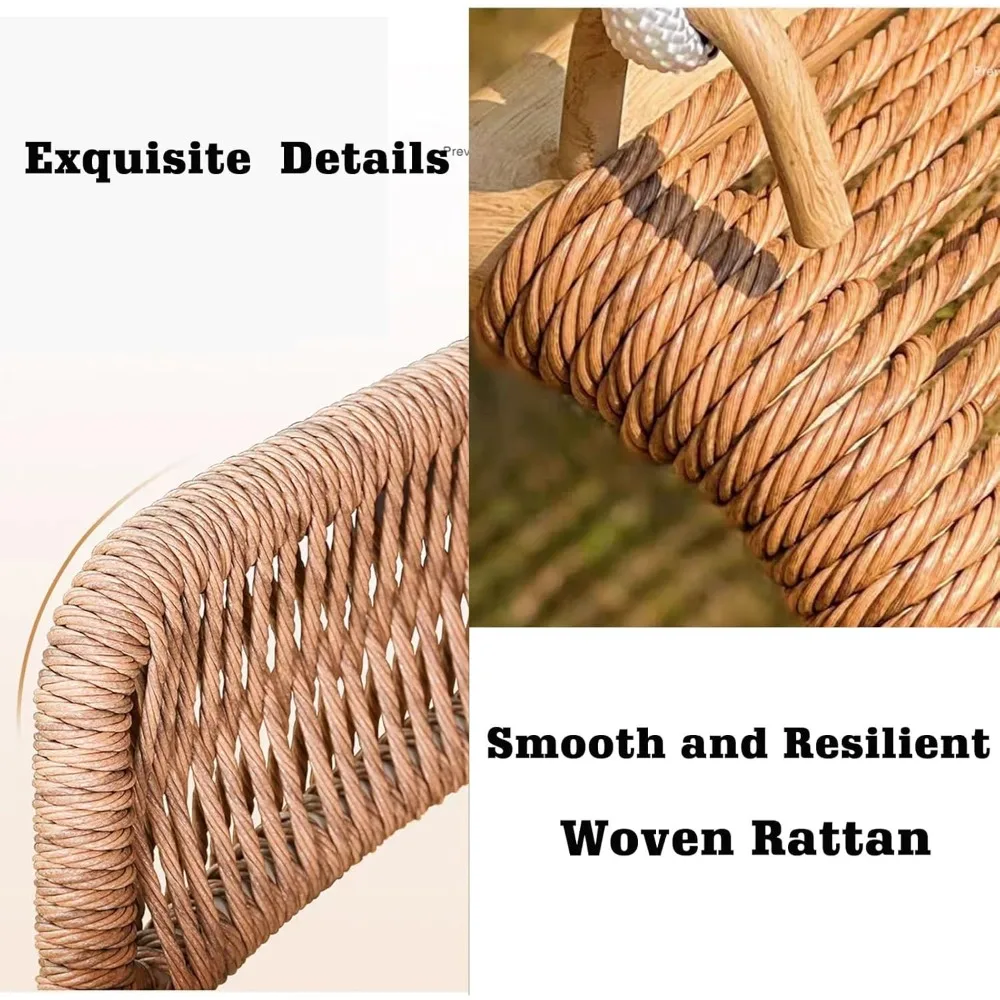
Outdoor Hammock Safety: Nature’s Challenges
Weather Exposure and Material Considerations
Outdoor hammocks face constant exposure to elements that can compromise safety:
- UV radiation degrades fibers and weakens fabric over time, reducing weight capacity
- Moisture promotes mildew and rot, particularly in cotton and certain synthetic blends
- Temperature fluctuations cause expansion and contraction that can stress attachment points
- Wind creates dynamic loads that exceed static weight ratings
To mitigate these risks:
– Choose hammocks with UV-resistant materials for prolonged outdoor use
– Store portable hammocks when not in use or during severe weather
– Consider whether it’s okay to leave your hammock outside based on your local climate conditions
– Inspect outdoor hammocks more frequently than indoor ones
Natural Anchor Point Assessment
Trees serve as common outdoor anchoring points but require careful evaluation:
- Select trees with minimum diameter of 8 inches (20 cm)
- Avoid dead, diseased, or young trees that may fail under load
- Use tree-friendly straps at least 1 inch (2.5 cm) wide to prevent bark damage
- Position straps at least 6 feet (1.8 m) above ground level for stability
Environmental Awareness
Outdoor hammock safety requires attention to:
– Ground conditions below (avoid rocky areas, sharp objects, or significant drops)
– Overhead hazards such as dead branches or power lines
– Local wildlife including insects that might damage materials
– Terrain angle and stability for stand installations
Safe Outdoor Hammock Anchoring and Setup
Creating a safe outdoor hammock setup requires special attention to anchoring methods:
Use Tree-Protection Straps: Always use wide webbing straps (minimum 1 inch/2.5 cm wide) that distribute pressure and prevent damage to tree bark. Avoid using rope directly against trees.
Master Proper Strap Placement:
– Position straps at consistent heights on both trees
– Maintain distance between trees appropriate for your hammock length (typically 10-15 feet)
– Ensure straps are firmly secured with no slippage potentialAlternative Anchoring Options:
– Permanent posts (cemented 2-3 feet into ground)
– Existing structures like pergolas or sturdy deck posts
– Specially designed rock anchors for areas without treesSite Selection Safety:
– Choose level ground free of sharp objects
– Maintain 18-inch (45 cm) minimum clearance from the ground
– Position away from campfires, water edges, and high-traffic areas
For situations where natural anchoring isn’t possible, specialized stands designed for outdoor hammock use provide reliable alternatives that adapt to varied terrain.
Outdoor Hammock Stands and Portable Systems
Outdoor hammock stands face more challenging conditions than their indoor counterparts and require special safety features:
- Weather-resistant materials (powder-coated steel or treated hardwood)
- Wider bases for stability on uneven terrain
- Ground anchoring capabilities for windy conditions
- Heavier construction to prevent tipping or movement
When using portable hammock systems outdoors:
– Verify terrain stability before setup
– Use included ground stakes for additional security
– Regularly check connection points that may loosen during use
– Ensure the frame sits completely level to prevent tipping hazards
Key safety differences between permanent and portable outdoor stands:
– Permanent stands offer superior stability in varying weather conditions
– Portable systems provide flexibility but require more frequent safety checks
– Weight capacity often differs significantly between types
For outdoor adventures, portable hammocks with stands combine convenience with engineered safety features specifically designed for varied terrain.
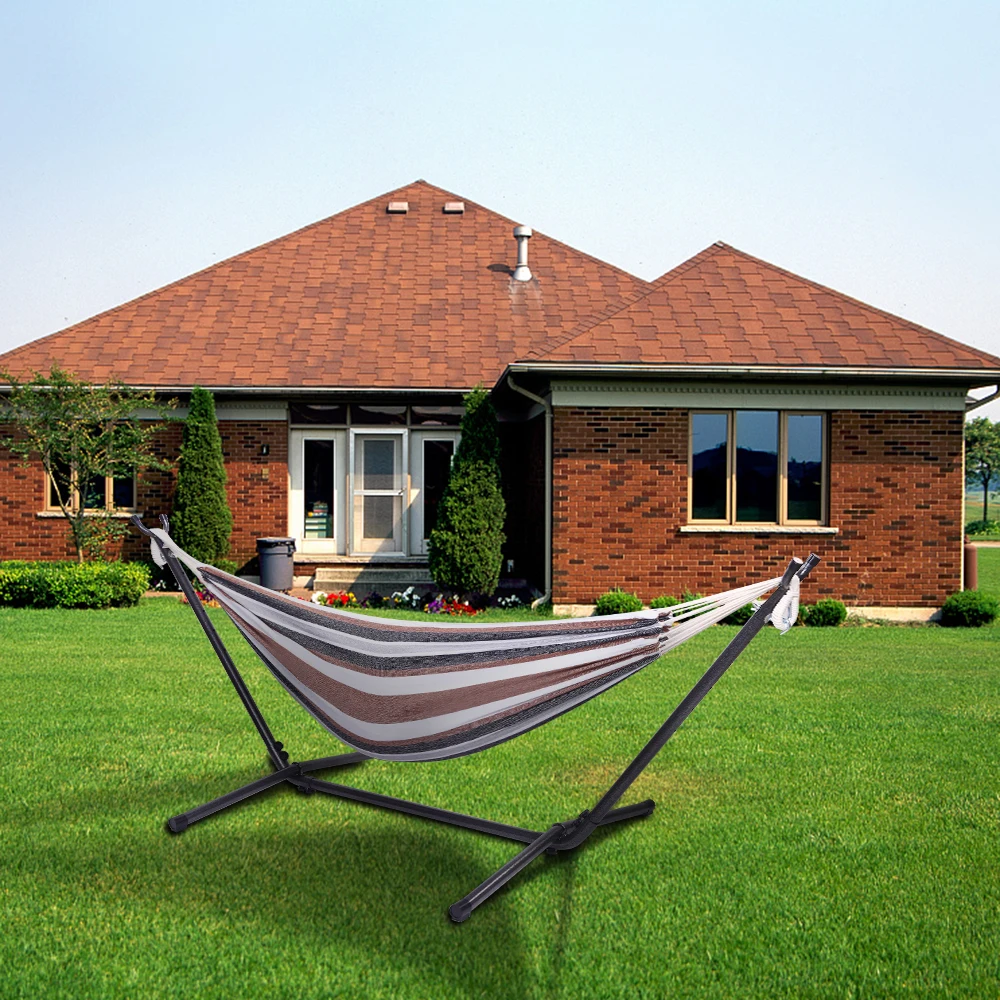
Material Safety: Indoor vs Outdoor Hammocks
The environment where you use your hammock directly impacts which materials provide the best balance of safety and durability:
| Material | Indoor Suitability | Outdoor Suitability | Weight Capacity | Maintenance Needs |
|---|---|---|---|---|
| Cotton | Excellent | Poor (unless treated) | Moderate | High – regular cleaning |
| Nylon | Good | Excellent | High | Low – spot cleaning |
| Polyester | Good | Excellent | Very High | Low – rinse occasionally |
| Olefin | Excellent | Excellent | High | Very Low – water resistant |
| Sunbrella | Good | Excellent | Moderate | Low – mildew resistant |
For outdoor hammocks, look for:
– UV-stabilized fabrics that resist sun degradation
– Water-resistant or quick-drying materials
– Mildew and mold resistance
– Higher denier ratings indicating stronger fibers
Indoor hammocks can prioritize:
– Softer, more comfortable materials
– Aesthetic appeal over weather resistance
– Breathable fabrics for temperature regulation
When setting up a lightweight hammock in any environment, pay special attention to material strength ratings, as ultralight designs may have lower safety thresholds.
Essential Safety Accessories for All Environments
Enhance hammock safety in any setting with these essential accessories:
Suspension System Upgrades
- Tree straps with multiple attachment points for adjustability
- Carabiners rated for minimum 1,200 pounds (544 kg) breaking strength
- Hardware with locking mechanisms to prevent accidental release
Environment-Specific Protection
- For outdoors: Rainflies and bug nets to protect both the hammock and user
- For indoors: Floor protectors or mats beneath stands to prevent slippage
- For both: Shock-absorbing components that reduce stress on anchor points
Comfort Accessories That Enhance Safety
- Hammock ridgelines that maintain optimal sag regardless of tension
- Stabilizer bars that reduce tipping motion
- Entry assist handles for users with mobility challenges
When setting up any hammock system, consider how accessories can address the specific safety concerns of your environment. For maximum durability and safety in challenging conditions, heavy-duty hammock sets include reinforced components designed for extended use in varied environments.
Dark Wood Hammock Sets, Porch Swing Chair Sets
$653.82 Select options This product has multiple variants. The options may be chosen on the product pageA-Frame Stand Hammock Sets, Swinging Hammock Chair Sets
$154.62 Select options This product has multiple variants. The options may be chosen on the product pageCamping Hammock Sets with Bug Net, Ultralight Camping Hammock Sets
$139.72 Select options This product has multiple variants. The options may be chosen on the product pageLight Wood Hammock Sets, Swinging Hammock Chair Sets
$1,359.35 Select options This product has multiple variants. The options may be chosen on the product pageClassic Wooden Stand Hammock Sets, Heavy Duty Hammock Sets
$1,061.68 Select options This product has multiple variants. The options may be chosen on the product pageHammock Sets with Canopy, Heavy Duty Hammock Sets
$286.31 Select options This product has multiple variants. The options may be chosen on the product page
Comparative Analysis: Indoor vs Outdoor Safety at a Glance
When deciding between indoor and outdoor hammock setups, consider these key safety comparisons:
| Safety Factor | Indoor Environment | Outdoor Environment |
|---|---|---|
| Anchor Point Stability | Controlled, consistent | Variable, weather-dependent |
| Material Stress | Minimal UV/moisture exposure | High environmental stress |
| Installation Complexity | Requires structural knowledge | Requires environmental assessment |
| Primary Failure Points | Wall/ceiling anchors | Tree damage, rope degradation |
| Maintenance Frequency | 3-6 month inspections | Before each use or weekly |
| Risk Predictability | High – controlled environment | Lower – variable conditions |
Indoor hammock setups generally offer more consistent safety conditions but require proper structural installation. Outdoor setups provide natural anchoring options but face unpredictable environmental factors that demand more frequent safety checks.
For a complete understanding of all factors that might influence your choice, our indoor vs outdoor hammocks buyer’s guide provides detailed comparisons based on your specific needs.
Safety Considerations for Special Populations
Different users require specific safety adaptations when using hammocks:
Children and Hammock Safety
- Adult supervision required at all times
- Lower hanging height (12-15 inches/30-38 cm from ground)
- No rope hammocks that create entanglement risks
- Clear rules about maximum occupancy and no jumping
Pet Considerations
- Keep hammocks out of reach when pets are unsupervised
- Check for and trim loose threads that could entangle animals
- Choose claw-resistant materials for pet households
Adaptations for Elderly Users
- Install assist handles or steps for easier entry and exit
- Position hammocks at slightly higher heights (22-24 inches/56-61 cm) for easier standing
- Select models with more stable designs and less swinging motion
For any user with specific needs, carefully selecting the best indoor or outdoor hammock locations can significantly enhance both safety and enjoyment.
Is Hanging a Hammock Indoors as Safe as Outdoors?
When properly installed, both indoor and outdoor hammocks can be equally safe, but they present different risk profiles:
Indoor hammocks offer controlled environmental conditions with no weather concerns, consistent temperatures, and protection from pests. The primary safety concerns revolve around structural integrity of mounting points and proper hardware selection. Once correctly installed, indoor hammocks require minimal ongoing safety attention.
Outdoor hammocks face variable conditions that create fluctuating safety profiles. Weather exposure, UV degradation, moisture, and natural anchor point health all require ongoing assessment. However, outdoor setups often allow for more flexible anchoring options and typically have greater distance from obstacles.
The safest environment ultimately depends on:
– Your ability to properly identify structural supports (indoors)
– The health and stability of available trees (outdoors)
– Your willingness to perform regular safety maintenance
– The specific design of your chosen hammock system
For those considering indoor installation, exploring the best places to hang a hammock indoors can help identify optimal locations that maximize both safety and enjoyment.
When Should You Consult a Professional for Hammock Installation?
While many hammock installations can be DIY projects, certain scenarios warrant professional assistance:
- When mounting to unusual building materials or structures
- If you cannot confidently locate wall studs or ceiling joists
- When installing in homes with historic or non-standard construction
- If permanent outdoor anchoring requires concrete work or deep post-setting
- When weight capacity requirements exceed standard ratings
Professional installers bring specialized knowledge of:
– Structural engineering principles for load distribution
– Appropriate hardware selection for specific scenarios
– Proper techniques for reinforcing mounting points
– Safety testing protocols for finished installations
The cost of professional installation is minimal compared to potential repair costs from failed mounting points or, more importantly, medical expenses from accidents. For complex installations requiring specialized knowledge, understanding A-frame hammock stability principles can help you communicate effectively with installation professionals.

Conclusion: Balancing Safety and Enjoyment in Any Environment
The key differences between indoor and outdoor hammock safety ultimately center on environment predictability, anchor point security, and material considerations. Indoor setups require careful attention to structural mounting but offer consistent conditions once properly installed. Outdoor hammocks provide natural hanging options but demand ongoing vigilance against weather-related degradation and environmental changes.
Regardless of where you hang your hammock, these universal safety practices remain essential:
– Never exceed weight capacity ratings
– Regularly inspect all components for wear or damage
– Maintain proper hanging angles (30 degrees from horizontal)
– Test new installations gradually before full use
– Follow manufacturer guidelines for your specific hammock type
By understanding the unique safety considerations of each environment, you can create a hammock experience that balances relaxation with peace of mind. Whether indoors or out, the perfect hammock placement for your home or garden allows you to enjoy the ultimate in relaxation without compromising on safety.

